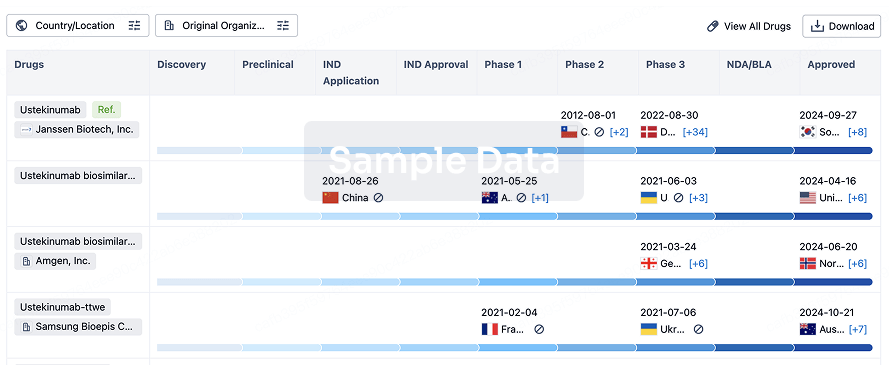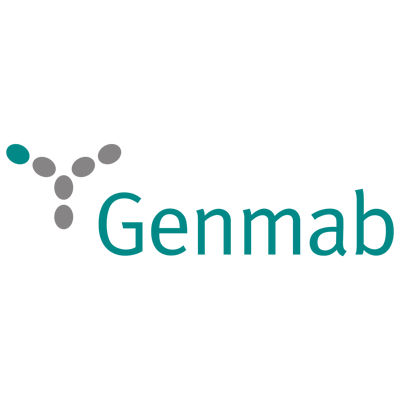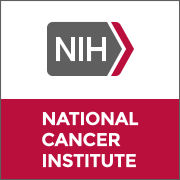- New preclinical data to show anti-tumor activity of ATNM-400 in hormone-resistant and HER2-resistant breast cancer, addressing the need for new treatment options beyond tamoxifen and trastuzumab
- ATNM-400 demonstrates efficacy across prostate cancer, non-small cell lung cancer (NSCLC), and breast cancer - three of the largest oncology indications - with potential as monotherapy, in combination, or as an alternative therapy
NEW YORK, Nov. 4, 2025 /PRNewswire/ -- Actinium Pharmaceuticals, Inc. (NYSE American: ATNM) ("Actinium" or the "Company"), a leader in the development of differentiated targeted radiotherapies, announced today that new preclinical data for its lead antibody radioconjugate program, ATNM‑400, will be presented at the 2025 San Antonio Breast Cancer Symposium (SABCS) taking place December 10‑14, 2025 in San Antonio, Texas.
Title: Anti‑tumor activity of ATNM‑400, a first‑in‑class Actinium‑225 antibody radioconjugate, in tamoxifen and trastuzumab resistant breast cancer models
Abstract Number: 2069
Presentation Number: PS4‑04‑26
Date/Time: Thursday, December 11, 2025, 5:00 PM–6:30 PM CT
Session: Poster Session 4
The ATNM-400 data presentation at SABCS follows prostate cancer data presentations at the American Association for Cancer Research (AACR) annual meeting and the Society of Nuclear Medicine and Molecular Imaging (SNMMI) annual meeting, NSCLC data was presented at the AACR-NCI-EORTC International Conference on Molecular Targets and Cancer Therapeutics, from which key findings are summarized below.
ATNM
‑
400: Program and Multi-Indication Opportunity Overview
ATNM-400 is a first-in-class antibody-radioconjugate powered by Actinium-225 (Ac-225), designed to deliver potent alpha-particle radiation directly to tumor cells. The therapy's high linear energy transfer (LET) enables precise tumor cell killing with minimal off-target exposure, while its target - a disease-driving protein linked to resistance and poor prognosis - is overexpressed across multiple solid tumors, including prostate, lung, and breast cancers.
Preclinical studies show ATNM-400 delivers best-in-class efficacy, overcomes resistance to, and synergizes with, standard-of-care therapies, supporting broad development as a monotherapy, combination, or treatment alternative across multiple solid tumors.
Prostate Cancer Data Highlights
Superior efficacy and durability vs 177Lu-PSMA-617 (active agent in Pluvicto®), 225Ac-PSMA-617, and ARPI enzalutamide (active agent in Xtandi®), with durable tumor control beyond 100 days.
Improved overall survival compared to 177Lu-PSMA-617 and enzalutamide.
Overcomes resistance to these standard-of-care agents, showing sustained tumor control and survival benefit in 177Lu-PSMA-617 and enzalutamide resistant prostate cancer models.
Synergy with ARPI therapy as the ATNM-400 target is upregulated after enzalutamide; combination achieved complete tumor regression in 40% of animals.
PSMA-independent activity enables treatment of patient populations not eligible for or progressing on 177Lu-PSMA-617.
NSCLC Data Highlights
3–5x greater tumor growth inhibition vs. front-line osimertinib (Tagrisso®, AstraZeneca) and EGFR tyrosine kinase inhibitor (TKI), second-line Dato-DXd (Datroway®, AstraZeneca/Daiichi Sankyo) a Trop-2 ADC, and third-line amivantamab (Rybrevant®, Johnson & Johnson) an EGFR-cMET bispecific. Combined 2024 sales of these agents exceeded $7B.
Target upregulation following EGFR inhibition; ATNM-400 + osimertinib achieved complete tumor regression in 100% of tumor-bearing animals demonstrating synergy of the combination.
Clinical rationale for combination supported by a study that showed EBRT or external-beam radiotherapy + osimertinib improved PFS to 32.2 months vs. 20 months with osimertinib alone (Sampath et al.1, Lancet eClinicalMedicine, 2025). ATNM-400 has the potential to deliver precision targeted, powerful alpha radiation via Ac-225 which on a per-cell basis is ~4–8x more biologically lethal than diffuse, low-energy EBRT beams. Clinically, this may translate to higher response rates, lower toxicity, and entry into previously untreatable market segments when osimertinib is combined with EBRT.
ATNM-400 Data Afford Development Opportunities in High-Value, Unmet Need Indications
The data package for ATNM‑400 across breast cancer, prostate cancer and NSCLC underscores Actinium's intention to demonstrate the potential for this radiotherapy candidate to address unmet needs in high‑value cancer segments. Data from preclinical studies thus far show ATNM-400 delivers best-in-class efficacy, overcomes resistance to, and synergizes with, standard-of-care therapies, supporting broad development as a monotherapy, combination, or treatment alternative across solid tumors. Key development opportunities based on the data include:
Breast Cancer: Potential in hormone‑resistant (tamoxifen) and HER2‑resistant (trastuzumab) patients, which represents a significant therapeutic opportunity with the HER2-targeted therapy Herceptin® (Roche and biosimilars) generating approximately $4.0 billion in sales in 2024.
Prostate Cancer: Broad use potential as a monotherapy, combination, or follow-on to ARPIs and PSMA radioligands; opportunity in the $10 billion ARPI market and Pluvicto non-responders or relapses who on balance might be expected to outnumber the patients treated with Pluvicto which generated $1.7 billion in revenue over the last twelve months.
Non-Small Cell lung Cancer: Superior anti-tumor activity compared to the leading first, second and third-Line approved EGFR mutant therapies that generated sales of over $7.0 billion in 2024 and mechanistic synergy with first-line therapy osimertinib, which accounted for approximately $6.6 billion in sales in 2024.
Sandesh Seth, Chairman and CEO of Actinium Pharmaceuticals, commented, "We're excited to present ATNM-400's breast cancer data at SABCS which expands our demonstration of its potential across multiple solid tumors. The strong single-agent efficacy of ATNM-400 and its ability to overcome resistance when coupled with enzalutamide (Xtandi®) in prostate cancer and osimertinib (TAGRISSO®) in lung cancer showcases Actinium's capability for innovation by exploiting the power of a radiotherapeutic directed to a target linked to resistance and poor prognosis. We believe that this program has the potential to meaningfully improve outcomes for patients with difficult-to-treat cancers and look forward to the data at SABCS".
About ATNM-400
ATNM-400 is a highly innovative, first-in-class, and multi-indication Actinium-225 (Ac-225) targeted radiotherapy candidate in development for prostate cancer, non-small cell lung cancer (NSCLC) and breast cancer. ATNM-400 is highly differentiated in prostate cancer as it targets a distinct non-PSMA protein strongly implicated in prostate cancer disease biology including progression and treatment resistance. Unlike 177Lu-PSMA-617, the active agent in Pluvicto® and the majority of radiotherapies under development, which rely on PSMA targeting, ATNM-400 is designed to maintain efficacy in low-PSMA or high-PSMA resistant disease, a major unmet clinical need as up to 30% of patients do not respond to PSMA radioligand therapies and up to 60% of patients have at least one PSMA-negative tumor lesion. Ac-225 delivers high-linear-energy-transfer alpha particles that induce irreparable double-strand DNA breaks, offering superior potency over beta emitters like Lutetium-177 (177Lu), and has a shorter tissue path length that may reduce off-target toxicity. The receptor specifically targeted by ATNM-400 continues to be expressed at a high level even after androgen receptor inhibitor (ARPI) and ATNM-400 has shown to overcome resistance to the ARPI therapy enzalutamide and work synergistically in combination with enhanced tumor control including complete tumor regression. In NSCLC, ATNM-400 has shown superior efficacy compared to approved first, second- and third-line EGFR therapies including small molecules, antibody drug conjugates and bispecific antibodies that is synergistic with osimertinib, an EGFR tyrosine kinase inhibitor (TKI) that is a standard of care therapy approved for treatment of patients in the frontline setting and is also able to overcome osimertinib resistance.
Prostate cancer is the most commonly diagnosed cancer in men, with ~1.5 million new cases globally and over 313,000 expected in the U.S. in 2025. While early-stage disease is typically managed with surgery, radiation, and ARPI therapy, up to 20% of cases progress to mCRPC - a lethal stage with limited treatment options. Targeted radiotherapy is a growing field in prostate cancer, dominated by PSMA-targeting agents like Pluvicto®, which had sales of over $1.3 billion in 2024, yet up to 30% of patients either lack or have no PSMA expression and virtually all patients develop resistance to Pluvicto® within 1-year. In the U.S., 40,000–60,000 mCRPC patients annually progress after ARPI therapy with approximately 35% of patients progressing within 1-year. As a class, ARPI therapies had sales of over $10.0 billion in 2024 including enzalutamide (Xtandi®) that led the class with sales of over $5.9 billion in 2024, highlighting a significant unmet need. Lung cancer is the leading cause of cancer deaths and there are there are over 200,000 new cases expected in the U.S. in 2025 and over 2 million cases globally. NSCLC accounts for approximately 85% of all lung cancer cases. EGFR targeting therapies including front-line osimertinib (Tagrisso®, AstraZeneca) an EGFR tyrosine kinase inhibitor (TKI), second-line Dato-DXd (Datroway®, AstraZeneca/Daiichi Sankyo) a Trop-2 ADC, and third-line amivantamab (Rybrevant®, Johnson & Johnson) an EGFR-cMET bispecific had sales of approximately $7 billion in 2024 with the EGFR TKI Osimertinib (TAGRISSO®, AstraZeneca) generating sales of $6.6 billion in 2024. Breast cancer is the most diagnosed cancer among woman in the United States with approximately 316,950 women expected to be diagnosed with the disease in 2025 according to the National Cancer institute. It is estimated that approximately 200,000 women are living with metastatic breast cancer in 2025, which is expected to grow to 250,000 in 2030. Of those diagnosed, hormone receptor-positive, HER2-negative (HR+/HER2-) breast cancer accounts for 70-75% of breast cancer, representing the largest subtype. In this setting, tamoxifen and trastuzumab (Herceptin®, Roche and biosimilars) generated sales of approximately $4.0 billion in 2024. Across prostate cancer, NSCLC and breast cancer, ATNM-400 has demonstrated treatment paradigm changing potential in these indications, which have over 800,000 new cases in the U.S. alone.
About Actinium Pharmaceuticals, Inc.
Actinium is a pioneer in the development of targeted radiotherapies intended to meaningfully improve patient outcomes. ATNM-400, Actinium's lead product candidate, is a novel, first-in-class, and multi-indication Actinium-225 (Ac-225) in development for prostate cancer, non-small cell lung cancer (NSCLC) and breast cancer. The antigen specifically targeted by ATNM-400 is highly expressed in metastatic castration-resistant prostate cancer (mCRPC), contributes directly to disease progression, poorer survival outcomes, and continues to be expressed at a high level even after androgen receptor inhibitor (ARPI) and Pluvicto® treatment. ATNM-400 is supported by preclinical data demonstrating tumor-specific uptake, higher efficacy than androgen receptor inhibitor enzalutamide (Xtandi®) and 177Lu-PSMA-617 radiotherapy, the active agent in Pluvicto®, durable tumor control and potent efficacy in prostate cancer models resistant to both enzalutamide and 177Lu-PSMA-617. In addition, ATNM-400 has demonstrated synergy with enzalutamide. In NSCLC, ATNM-400 showed superior efficacy to EGFR targeting therapies including osimertinib (TARGRISSO®, AstraZeneca), Dato-DXd (DATROWAY®, AstraZeneca/Daiichi Sankyo) and amivantamab (RYBREVANT®, J&J) with synergistic activity in combination with osimertinib. In breast cancer, Actinium has been studied in hormone and HER-2 resistant settings with data to be presented at the San Antonio Breast Cancer Symposium in December 2025. The data generated to date with ATNM-400 supports its potential across treatment settings to be used either as a monotherapy, or in combination or sequenced with other therapies. Actinium's most advanced product candidate in development is Actimab-A, a CD33 targeting therapeutic, that is a potential backbone therapy for acute myeloid leukemia (AML) and other myeloid malignancies leveraging the mutation agnostic alpha-emitter radioisotope payload Actinium-225 (Ac-225). Actimab-A has demonstrated potential activity in relapsed and refractory acute myeloid leukemia (r/r AML) patients in combination with the chemotherapy CLAG-M including high rates of Complete Remissions (CR) and measurable residual disease (MRD) negativity leading to improved survival outcomes and is being advanced to a pivotal Phase 2/3 trial. In addition, Actinium is engaged with the National Cancer Institute (NCI) under a Cooperative Research and Development Agreement (CRADA) for development of Actimab-A in AML and other myeloid malignancies. The first clinical trial under the CRADA will evaluate the triplet combination comprised of Actimab-A, Venetoclax (Abbvie/Roche) an oral Bcl-2 inhibitor and ASTX-727 (Taiho Oncology, an Otsuka holdings company) a novel oral hypomethylating agent (HMA) in frontline acute myeloid leukemia (AML) patients. Additionally, Actinium is developing Actimab-A as a potential pan tumor therapy in combination with PD-1 checkpoint inhibitors including KEYTRUDA® and OPDIVO® by depleting myeloid derived suppressor cells (MDSCs), which represents a potential multi-billion-dollar addressable market. Iomab-ACT, Actinium's next generation conditioning candidate, is being developed with the goal of improving patient access and outcomes for potentially curative cell and gene therapies. Iomab-B is an induction and conditioning agent prior to bone marrow transplant in patients with r/r AML, which Actinium is seeking a potential strategic partner for the U.S. In addition, the company's R&D efforts are primarily focused on advancing several preclinical programs for solid tumor indications. Actinium holds approximately 240 patents and patent applications including several patents related to the manufacture of the isotope Ac-225 in a cyclotron.
For more information, please visit:
Sources:
Sampath et al. Osimertinib plus consolidative radiotherapy for advanced EGFR mutant non-small cell lung cancer: a multicenter, single-arm, phase 2 trial. The Lancet eClinicalMedicine, Volume 87, 103435. (25)00367-0/fulltext.
Forward-Looking Statements
This press release may contain projections or other "forward-looking statements" within the meaning of the "safe-harbor" provisions of the private securities litigation reform act of 1995 regarding future events or the future financial performance of the Company which the Company undertakes no obligation to update. These statements are based on management's current expectations and are subject to risks and uncertainties that may cause actual results to differ materially from the anticipated or estimated future results, including the risks and uncertainties associated with preliminary study results varying from final results, estimates of potential markets for drugs under development, clinical trials, actions by the FDA and other governmental agencies, regulatory clearances, responses to regulatory matters, the market demand for and acceptance of Actinium's products and services, performance of clinical research organizations and other risks detailed from time to time in Actinium's filings with the Securities and Exchange Commission (the "SEC"), including without limitation its most recent annual report on form 10-K, subsequent quarterly reports on Forms 10-Q and Forms 8-K, each as amended and supplemented from time to time.
Investors:
[email protected]
SOURCE Actinium Pharmaceuticals, Inc.
21%
more press release views with
Request a Demo


















